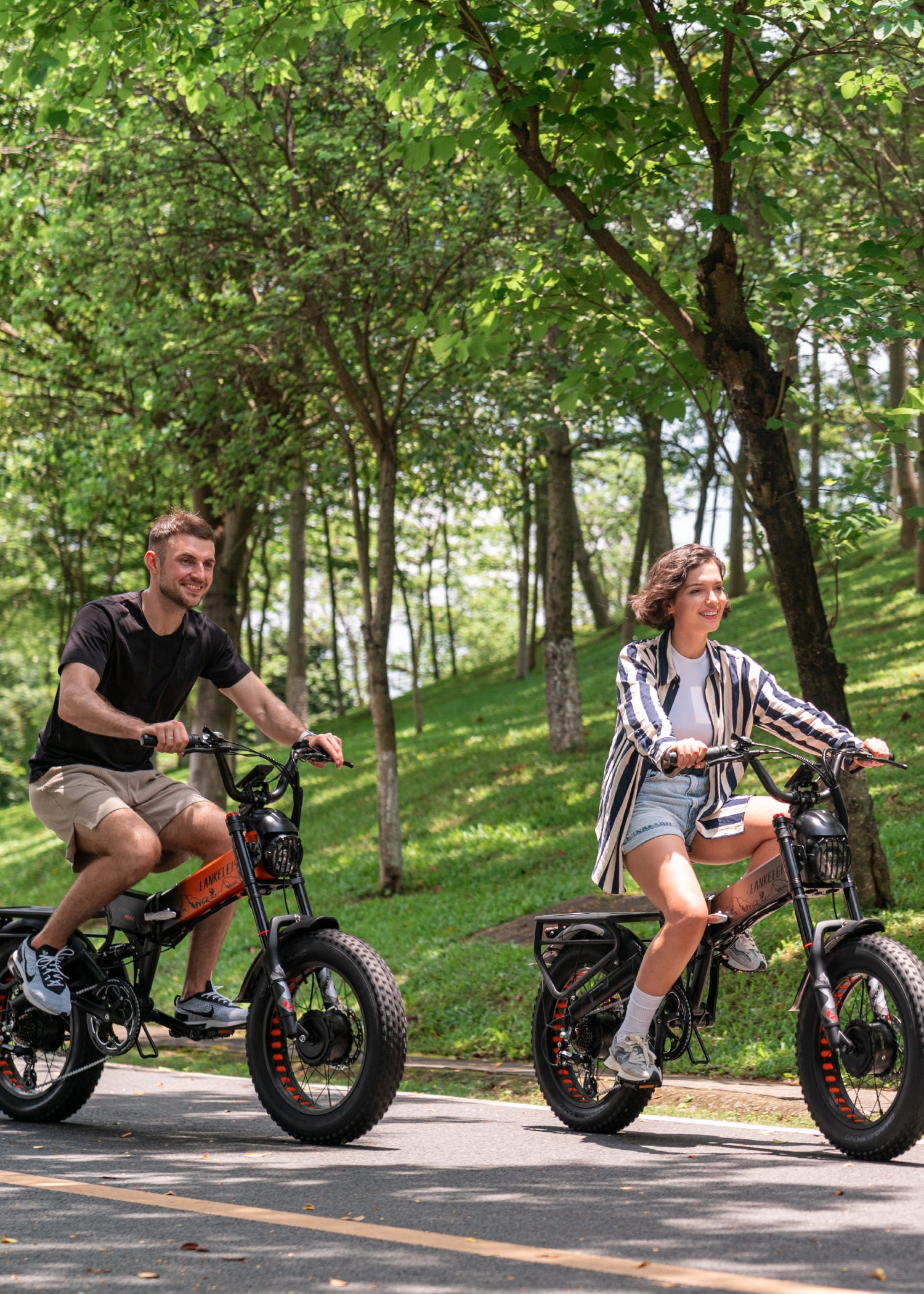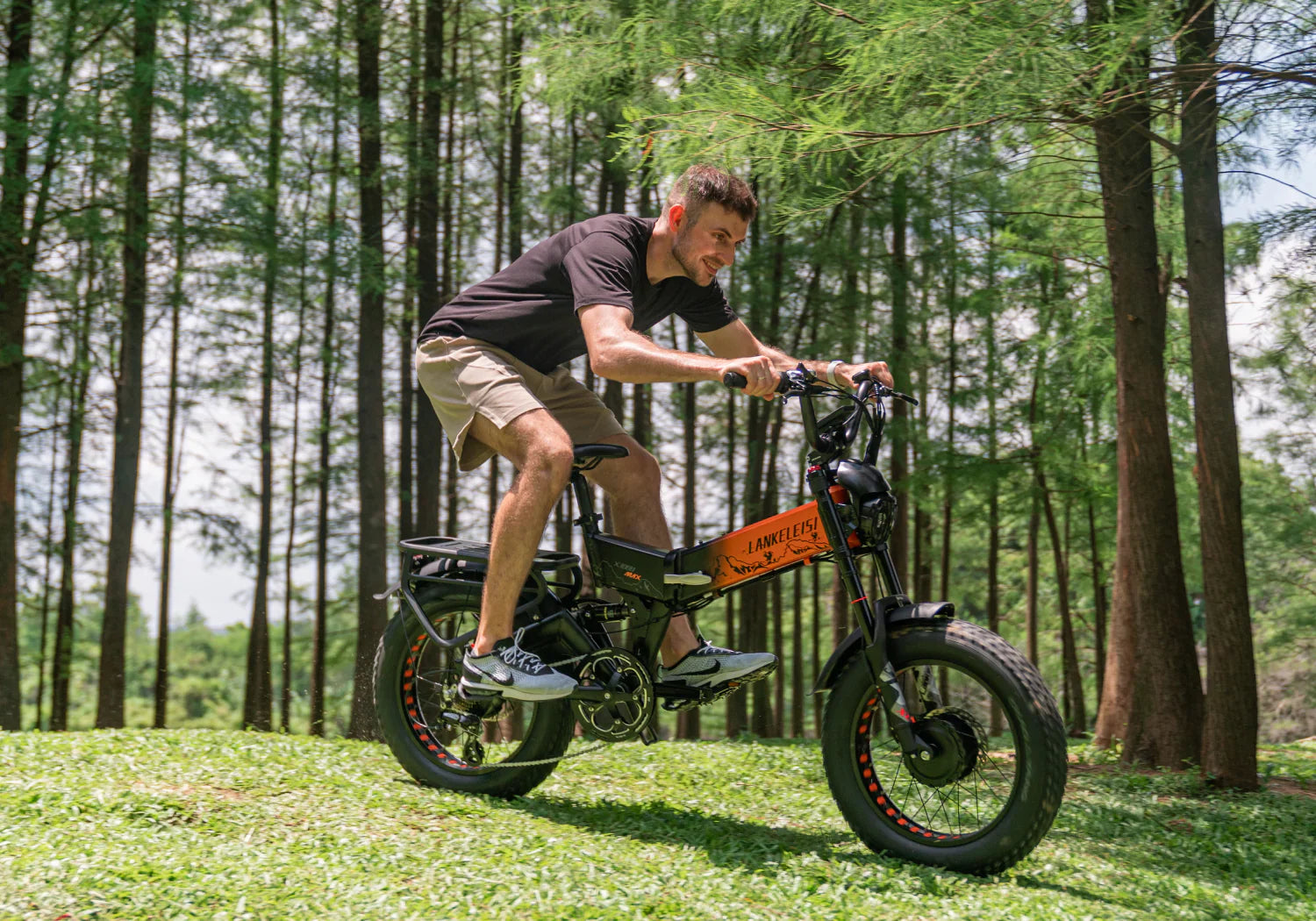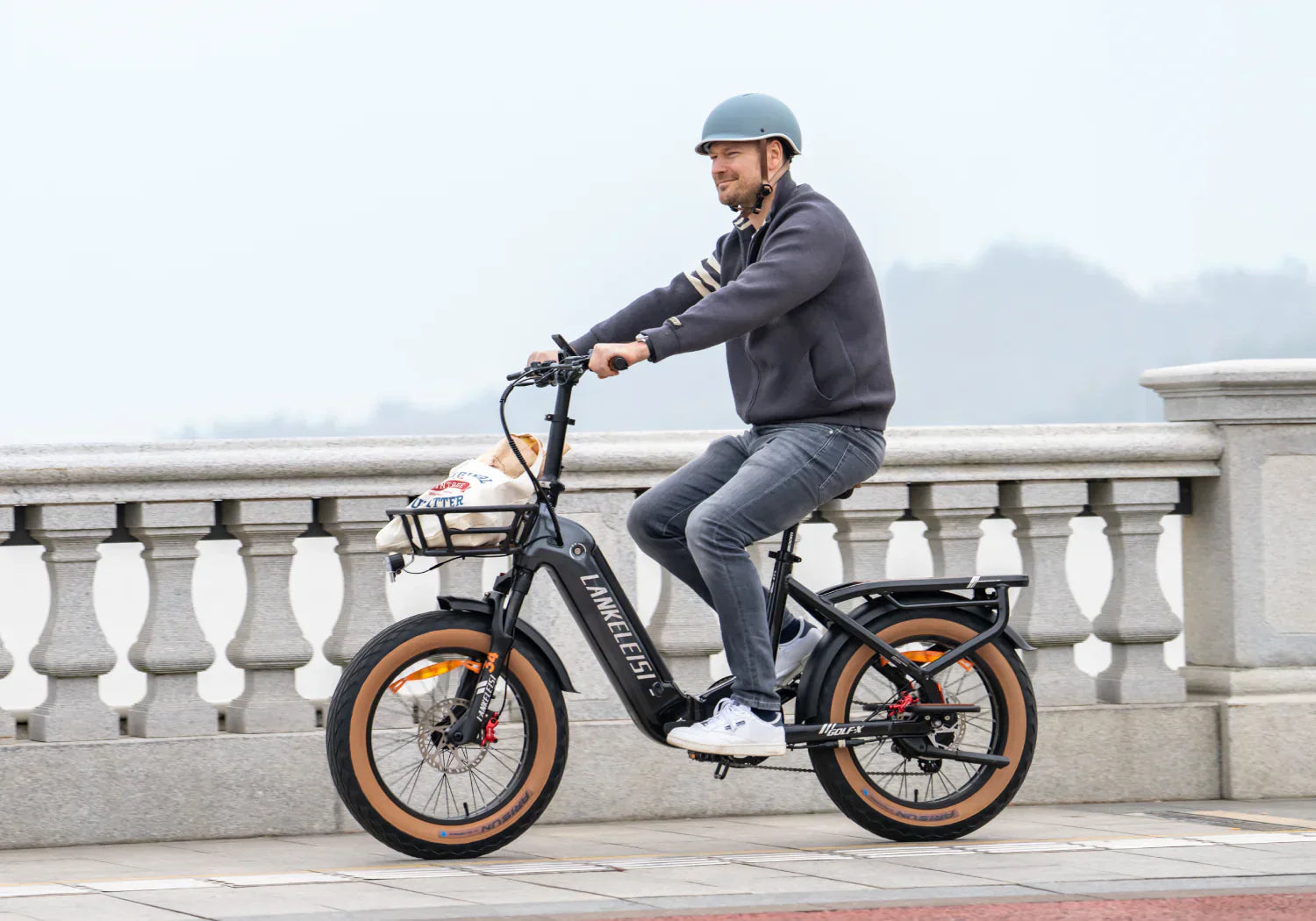Do you experience increasing pain in your hips and soreness in your legs while riding? In fact, the main reason is that your bike seat is uncomfortable or it could also be due to an improper adjustment of your bike saddle.
So, how do you adjust a bike seat ? In this article, you'll learn the correct way to adjust your bike seat to help you achieve better comfort while riding.
Generally speaking, poor riding posture and force generation methods can cause serious damage to the knees, especially for commuter bikes and shared bikes, whose seats are set relatively low, making them unsuitable for long-distance rides.
A research report shows that a saddle height that's too low causes muscle fatigue 12% earlier, and many novice riders like to lower the saddle to create a more relaxed posture. This adjustment will make riding more tiring, so learning how to properly adjust your bike saddle is crucial.
Why is it so important to adjust your saddle correctly?
Properly adjusting your bike saddle is essential to prevent pain and optimize your performance. An ill-fitting saddle can cause knee, back, or perineal pain, as well as increased muscle fatigue. Conversely, a well-calibrated position promotes correct posture, improved power transfer, and increased comfort while riding.
Adjusting the angle of the bicycle saddle
The angle of a bicycle seat refers to the angle between the seat and the horizontal line. This can be determined by the level of support your sit bones receive on the bicycle seat, which is generally determined by two factors:
- Is the saddle width compatible with the body's sit bones?
- Does the saddle angle properly support the body's sit bones?
In the first case, it is recommended to replace the bike saddle with a more suitable one. If you choose a LANKELEISI brand electric bike , it is recommended to choose a saddle specifically designed for LANKELEISI electric bikes. There are many types of bike saddles on the market. How to choose? I recommend reading " How to Choose the Right Bike Saddle ."
In the second case, you can adjust the saddle angle from 0 to -6 degrees. That is, it must be within 6 degrees of horizontal or nose-down, and can be adjusted depending on the support the saddle provides while riding. Generally, the nose tip is not adjusted upwards, as this would reduce support in the sit bones. If the nose tip drops too much, even though the sit bones have more support and are more conducive to leg strength, your arms will need more force to support your body, thus losing some control.
Generally speaking, LANKELEISI professionals recommend that novice riders adjust the saddle to a basic level, then find the feeling of support the saddle gives the sit bones based on the maximum height and the front and rear of the saddle. Once the core muscles are strengthened, a certain forward lean angle can be adjusted appropriately.
Adjusting the tilt of the bicycle saddle
- Neutral position: Start by using a level to level the saddle. This neutral position is suitable for most riders and ensures even weight distribution.
- Anterior tilt: A slight forward tilt (1 to 2 degrees) can relieve pressure on the perineum. However, leaning too far can cause a forward slide and put strain on the arms and shoulders.
- Lean back: Tilting the saddle slightly backward can improve comfort when climbing hills or riding over rough terrain. However, too steep a slope can cause soft tissue compression and lower back pain.
Adjusting the height of the bicycle saddle
The height of a bicycle seat can be adjusted to suit your needs. Several different methods are listed below for reference only. If you have a better adjustment method, that would be great.
Heel measurement
Sit on the bike seat, keep your feet level, and pedal with your heels. When your pedals reach the lowest point, your legs should be straight, without feeling overextended or having bent knees.
The adjusted riding state is that you won't have to swing your body left and right to reach the lowest point of the pedals, nor will you feel like your legs can't be stretched when riding.

Crotch Method
Stand barefoot against a wall and measure the distance from the floor to your hips.
Multiply this measurement by 0.885 to get the ideal height from the center of the bottom bracket to the top of the saddle. For example, for pants with an 80 cm inseam, the recommended height is 70.8 cm.
Method 109%
This measurement method originates from a paper published by Hamley and Thomas in 1967. Through long-term experiments, they discovered that the ideal height of a bicycle saddle (from the bottom dead center of the pedal to the top of the seat) is 109% of the crotch height (the height from the crotch to the ground can be easily measured by clamping a book between the legs). Through various practices, this method has been widely accepted, recognized by top coaches in the industry, and has been used for a long time.
However, new research shows that the 109% method does not achieve maximum power and optimal pedaling efficiency.
Lemond Method
This method is a variation of the 109% method and was first promoted by Greg LeMond, who won three Tour de France titles, hence the name LeMond Method.
The Lemond method also measures inseam height, but uses a different calculation formula: 88.3% of inseam height is the distance from the top of the saddle to the center of the bottom bracket. This method allows you to quickly and accurately set the correct height for your bicycle saddle. However, if a person has relatively long thighs, the data obtained using this method will be quite different. Therefore, this method has some limitations.
Holmes Theory
This result comes from some research on cycling injuries and uses different measurement methods than the three methods above. It essentially uses a goniometer to measure the knee flexion angle when the pedal is at bottom dead center (foot level). Holmes believes this angle should be between 25° and 35°, and if you have a history of knee injuries, you should aim for something closer to 25°.
If your bike seat is usually in a low position, it will certainly be uncomfortable at first after adjusting it higher, but you will get used to this height after 2 to 3 weeks and it will improve your performance during long-term training. Of course, if you still feel uncomfortable, you can lower the seat slightly to increase the knee angle. In practice, most people's knee angle is between 25° and 30°, and is usually close to 25°.
Front and rear adjustment of the bicycle saddle
After adjusting the height according to the above method, you can ride a bicycle in a fixed place, place the sitting bones in the appropriate position of the bicycle saddle (feel the seat support for the sitting bones on both sides), touch the pedal surface with the forefoot, and when the foot is placed at the 3 o'clock position (horizontal state), the vertical line passing through the outside of the knee should pass through the pedal axis.
If the knee extends beyond this position, the bicycle seat can be moved back appropriately. Similarly, if the knee does not reach this position, the seat should be moved forward appropriately.

Cycling Tips
1. There are some differences between the saddles of different models, so it's important to choose the right one. Generally, the lower the handlebars , the narrower and longer the saddle should be. Conversely, a mountain biker with a vertically inclined upper body can use a wider saddle.
2. Mainly used for urban riding, due to frequent emergencies and the need to get on and off the bike frequently, the bike saddle can be adjusted to a position where the soles of the feet touch the ground.
3. If you feel pain in the knee joint, you can adjust the height of the saddle accordingly. If the pain point is in front of the knee, you can raise the seat cushion by 2 to 3 mm. If the pain point is behind the knee, lower the seat cushion by 2 to 3 mm.
4. The bicycle saddle has limited ability to adjust riding posture. First, you need to choose a saddle that fits your height.
5. If you often ride a bike and then use an electric mountain bike , you may experience discomfort in your buttocks and waist. This problem will occur even if you adjust the bike seat to a suitable height. This is due to the body's inability to adapt. Usually, this will improve significantly after a few rides. The problem of buttock pain can also be improved by wearing better cycling clothing. The quality of padding in cycling shorts in different price ranges varies greatly.
Conclusion
Properly adjusting your bike saddle is essential for your comfort and performance on the bike. By methodically adjusting angles, tilts, heights, and more, you can optimize your posture and reduce your risk of injury. Don't hesitate to consult the professionals at LANKELEISI to perfect your position.









